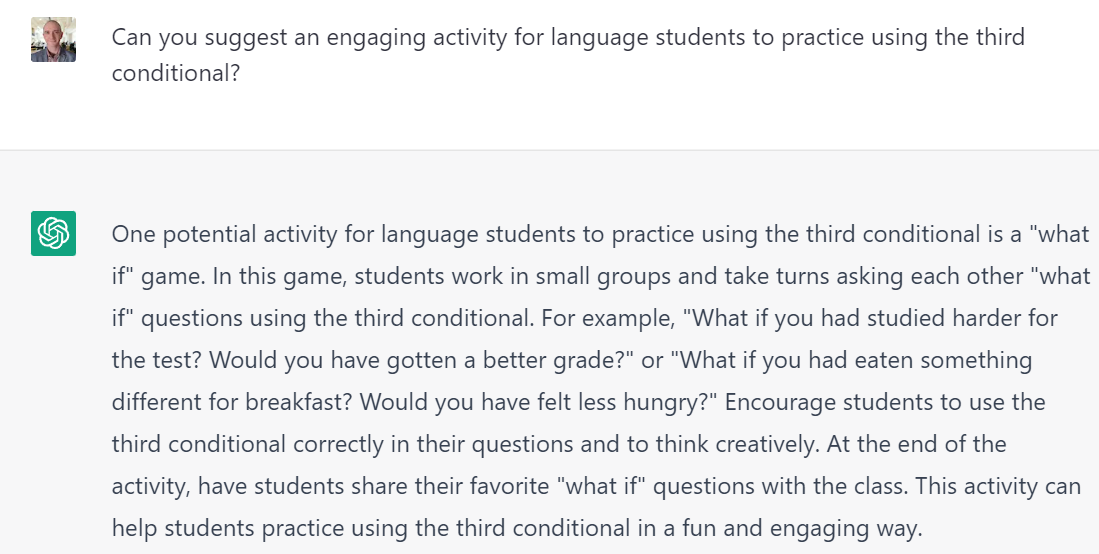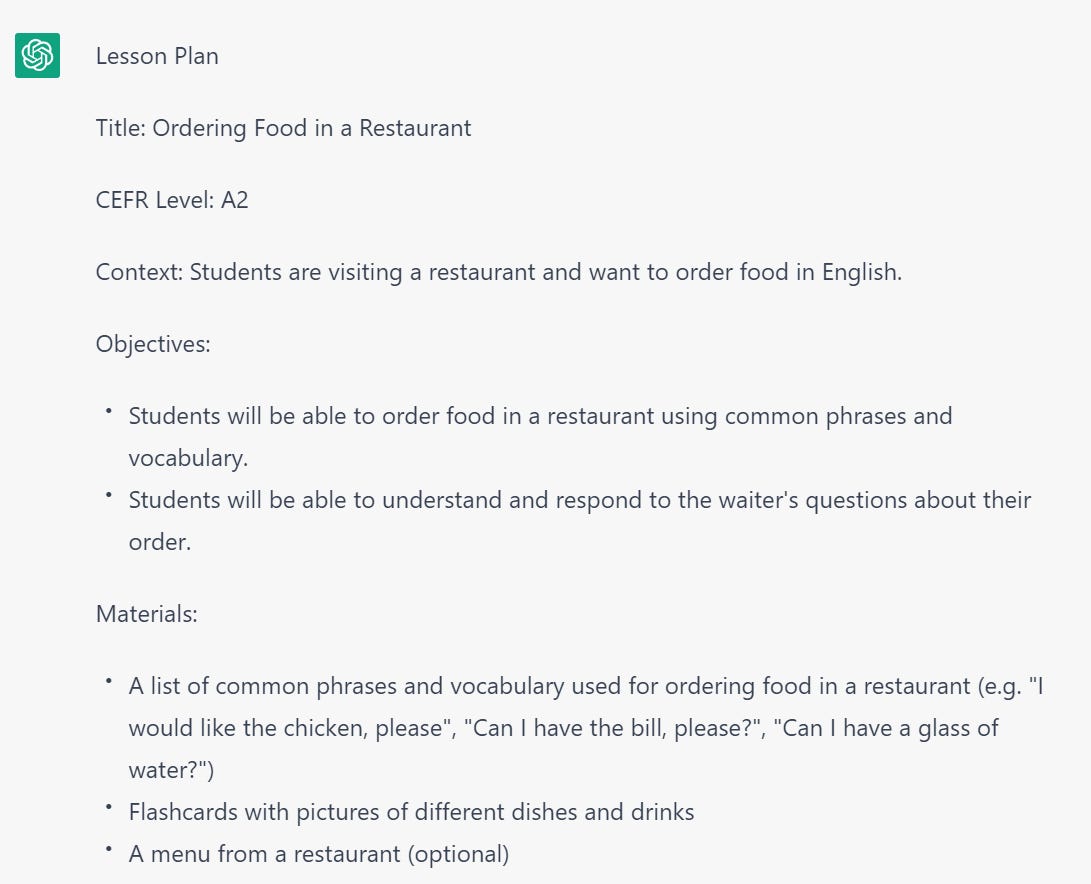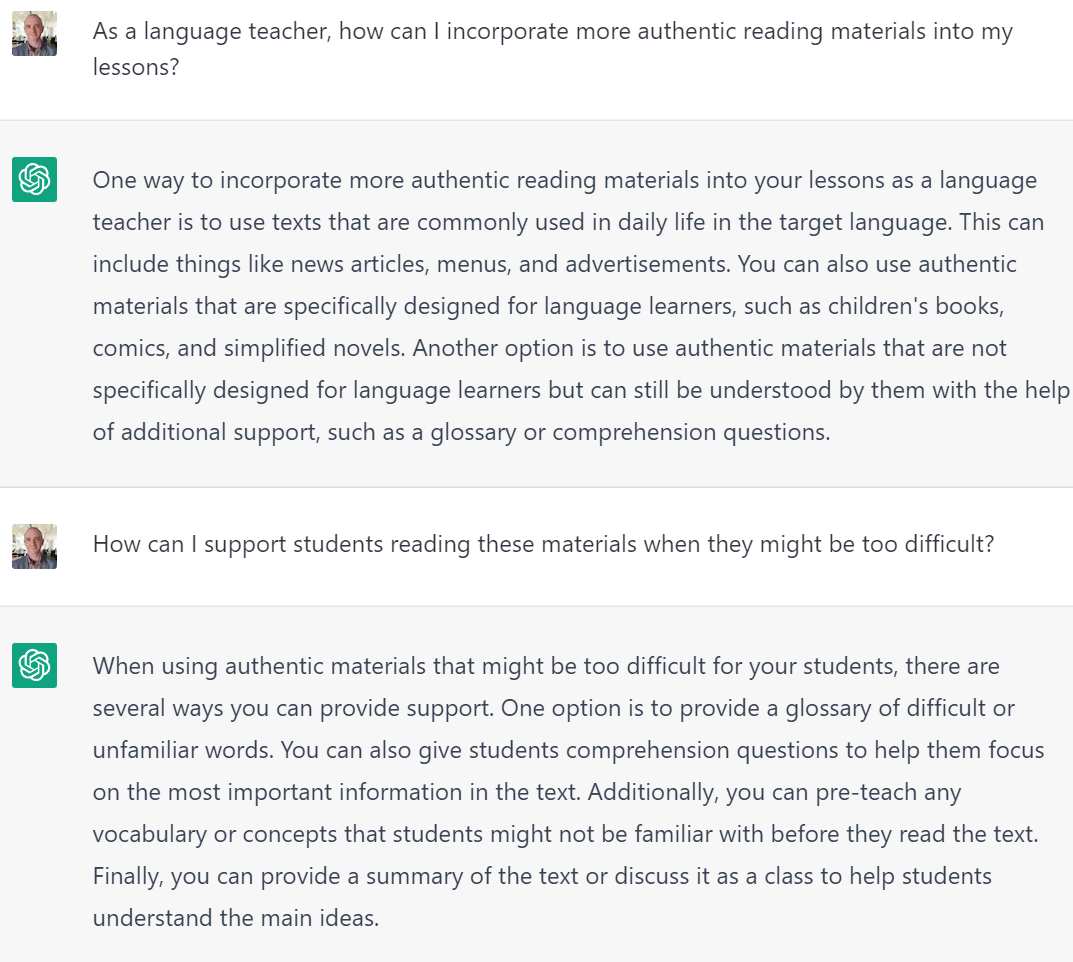AI Can Now Write Your Lesson Plans
Meet your new AI teaching assistant - ChatGPT.
AI can now write lesson plans.
Oh, and they can also suggest activities, create teaching materials, give feedback to students, and much more. All for free.
Let's take a look.
AI Writing and ChatGPT
AI writing has been a trend in the last year or so, and has helped marketers and copywriters write product descriptions and sales letters.
However, a new AI called ChatGPT from OpenAI has exploded in popularity in the last month. It can generate human-like text with a high degree of accuracy across a vast number of topics. It can write code, stories, movie scripts - anything you can think of.
The key differences between ChatGPT and other AI writing tools are:
The interface is much clearer (it looks like a Chatbot), so you type what you want rather than have to be technical.
It does a great job of remembering what you've already asked. So if you would like it to change or edit something, it will.
But how can this can help us as teachers?
What Do Teachers Create?
What do we language teachers spend our time making? Here’s what I create (although I’m sure I missed lots - let me know in the comments what else you create!)
General lesson activities
Language-specific activities
Lesson plans
Student feedback
Conversation prompts
Dialogue & role-play
Grammar explanations
Grammar exercises
Cloze exercises
Personal development
I’ll let ChatGPT do the talking - I'll ask it to create each of the items on this list and let you judge the outcome.
1. General lesson activities
We’ve all struggled to think of a fresh activity, so our students won’t get bored. Now we can ask ChatGPT for ideas:
Top tip: you can type ‘please continue’, which will suggest more activities.
2. Language-specific activities
Or perhaps you’re trying to think of a way to practice a particular language point? You could ask:
3. Lesson plans
This one blew my mind:
4. Student Feedback
I then picked out an example IELTS writing answer from Cambridge's website, pasted it in and asked ChatGPT to give feedback:
5. Conversation prompts
6. Dialogue & Role-play
7. Grammar Explanations
8. Grammar exercises
9. Cloze exercises
10. Personal Development
Getting started
You’ll need to create an account first. Once you have, then you can visit
It’s simple: go to the OpenAI website, and click ‘Try ChatGPT’. It will guide you to create an account with OpenAI, then you can try ChatGPT. If you have a Google account, you can use it to sign up and log in.
Words of warning
It can sometimes be inaccurate - I’ve seen it refer to learning styles (argh!) and also had it confidently tell me incorrect information when I asked about common errors Chinese learners make when learning English.
Also, the AI was only trained on data until the end of 2022, so it won’t know anything more recent.
What do you think?
What are your thoughts about ChatGPT’s capabilities?
As teachers, what else could we use it for? Let me know your ideas in the comments.
Let’s not forget that this is all from the teacher’s point of view - I’ll look at how it can help students from their point of view in the following newsletter!
If you liked this article, you’ll love my books:
📝 Lesson Planning for Language Teachers - Plan better, faster, and stress-free (4.5⭐, 175 ratings).
👩🎓 Essential Classroom Management - Develop calm students and a classroom full of learning (4.5⭐, 33 ratings).
🏰 Storytelling for Language Teachers - Use the power of storytelling to transform your lessons (4.5⭐, 11 ratings).
🤖 ChatGPT for Language Teachers - AI prompts and techniques for language teachers (4.5⭐, 10 ratings).
💭 Reflective Teaching Practice Journal - Improve your teaching in five minutes daily (4.5⭐, 16 ratings).
📄 PDF versions available here.


















ChatGPT is an incredible language learning resource! I have used it to create lesson plans, handouts, practice exercises, Illustrative tables, and other materials; to translate between languages; and to produce IPA transcripts. I have also used it for assessments and practice exercises, including cloze sentences and multiple choice quizzes with answer keys. However, as noted in your article, accuracy of such materials should be carefully checked. In one practice activity I had it create regarding definite versus indefinite articles, more than half of the answers in the answer key were wrong.